Racism hurts
Science probes racism and what people can do to fight it
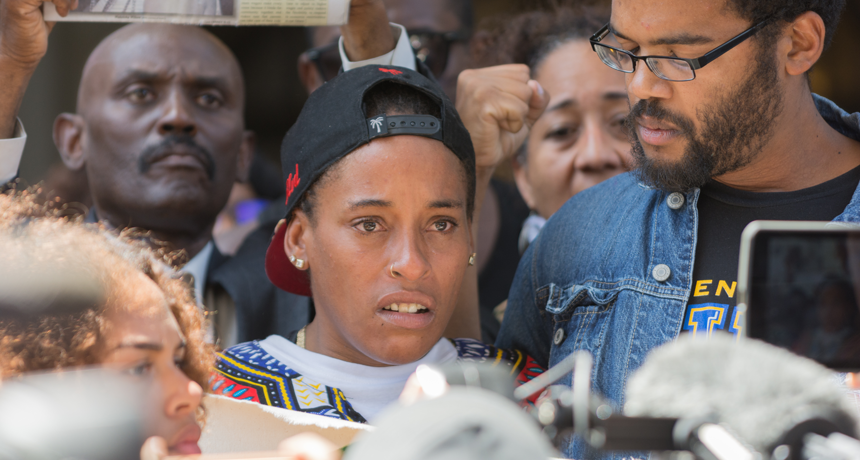
People at this July 2016 Los Angeles rally were sad and angered by the lack of respect they said that local blacks were experiencing from police and others.
br-photo/iStockphoto
Share this:
- Share via email (Opens in new window) Email
- Click to share on Facebook (Opens in new window) Facebook
- Click to share on X (Opens in new window) X
- Click to share on Pinterest (Opens in new window) Pinterest
- Click to share on Reddit (Opens in new window) Reddit
- Share to Google Classroom (Opens in new window) Google Classroom
- Click to print (Opens in new window) Print
“Will we have to move again?” Nida asked her parents. She and her twin brother Noah are 10 years old. Their African-American family had recently moved to a suburb of Atlanta, Ga. Less than a week after the 2016 presidential election, however, a classmate had harassed Nida’s brother at school.
“Trump’s going to kick you out of the country!” that other boy had told him. Noah walked away. The tormenter resumed his taunts at recess.
During this year’s presidential campaign, some candidates and their supporters spoke about sending immigrants back to the nation of their birth. Others talked about watching people closely if they came from certain foreign regions or practiced a specific religion. Other comments suggested building a wall to keep foreigners out of the United States. Noah’s mean classmate had echoed some of those ideas.
Noah felt horrible. “He felt like he couldn’t make it stop,” said his mom, Maggie. She is a surgeon.
No, the family would not move again, Maggie and her husband told their children. Noah’s dad spoke to the teacher and principal. In the end, the school disciplined the other boy.
But children have not been the only victims of such bigotry.
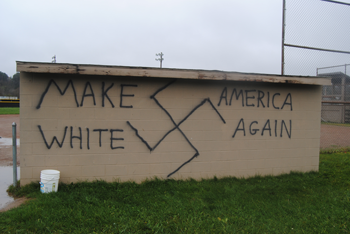
Christy is a graduate student in upstate New York who studies the immune system. She came to the United States from a Caribbean island nation. Three days after the 2016 election, Christy drove to New York City. On the way, she bought a beverage at a gas station. As she left, a man followed. He insulted her because she is black. Walking toward her, the man threatened Christy. He told her to leave town. “I was so scared,” she recalls.
A week later, Christy was with two friends in New Jersey. A family drove by in a convertible. Three white girls sat in the back seat. As their car passed, they made an obscene gesture at Christy’s group.
“Don’t stare,” Christy heard the girls’ mom say. But the woman did not reprimand the girls. She did not tell them their harassment had been wrong.
The names in these cases have been changed to protect the individuals’ privacy. But their stories are real. Fortunately, these situations did not become violent. Yet harm was done. People were threatened because of their skin color or ethnic background.
In short, Christy and Noah’s families were targets of racism. Simply stated, racist people “believe that because of their skin color, they are better than others,” explains Alex Pieterse. He’s a psychologist at the University at Albany in New York.
The Southern Poverty Law Center counted 867 hate incidents in the 10 days following the 2016 U.S. election. Of that total, at least 648 were based on racism. The group’s data come from reports made to the organization, plus a review of news stories. Many more cases go unreported, the group said in a November 29 report.
Sadly, more than 180 of the total number of cases took place at children’s and teens’ grade schools. Another 140 happened at universities. That’s about three out of every eight cases.
Story continues below image.
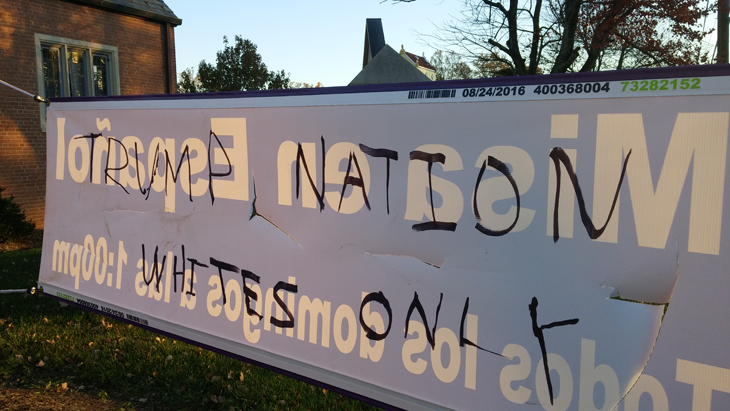
In Silver Spring, Md., for instance, someone spray-painted a “kill” message aimed at blacks in an elementary school bathroom. In North Bend, Ore., students shouted at an 11-year-old girl that she should “go back to Mexico!” She didn’t even come from there. She was an American of Colombian descent. In DeWitt, Mich., eighth-grade boys linked arms to block a seventh-grade girl from her locker. The boys chanted things such as “Let’s build the wall.” Or “Let’s make America great again. You need to go back to Mexico.” The girl felt “petrified” about returning to school the next day, her mom told the local newspaper.
The Southern Poverty Law Center also released a report on November 28. It gives the results of a nationwide survey of 10,000 teachers and other educators teaching elementary grades to high school. More than 2,500 described specific cases of bigotry and harassment. The report authors say the survey shows a recent “distinct uptick” in hate incidents. Eight out of 10 of the people who responded also saw heightened anxiety among students who belong to particular ethnic groups or are LGBT. (That stands for lesbian, gay, bisexual or transsexual.)
“These dynamics are new and can be traced directly to the results of the [November 2016] election,” the report’s authors say. For example: “The day after the election, I had a group of Hispanic girls in my homeroom targeted by a boy who told them Trump was going to deport their families,” reported one high school teacher in New Jersey. “A black student was blocked from entering his classroom by two white students chanting, ‘Trump, Trump,’” noted a high school teacher in Tennessee. A teacher in Colorado wrote that seventh-grade boys had been yelling, “Heil Trump!”
Such racist incidents are ugly. And sadly, they’ve happened in every state. Read on to learn what racism is and how it hurts not only the people it targets but also others. Then see what you can do to respond.
Defining racism
Racism “is more than bullying,” says Terrence James Roberts. He’s a psychologist in Pasadena, Calif. Racism is a prejudice that persists because significant swaths of society either share this attitude, condone it or refuse to challenge it.
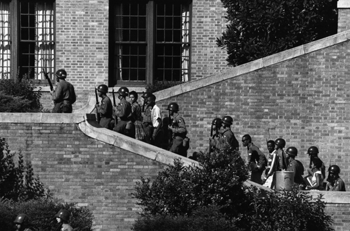
Sadly, at just 15 years old, Roberts learned firsthand just how ugly racism can be.
It was September 1957. The governor of Arkansas sent soldiers to stop Roberts and eight other black students from entering Little Rock Central High School in that state. Until then, only white students had been allowed to go to that school. But in 1954, the U.S. Supreme Court held that the nation’s Constitution does not allow separate schools based on race. Despite that, many whites had wanted black students kept out.
President Dwight Eisenhower ordered soldiers to protect Roberts and the rest. With that, the “Little Rock Nine,” as they came to be known, finally got into the school. Yet the students still received threats.
“My only way to survive” was to stay “as far as possible from those who would kill me on sight,” Roberts recalls. Beyond that, he had to deal with “others who were not as willing to kill me, but who [would] stand in the way of and prevent me from doing things, like going to school.”
Racism did not start there — nor end there. “Racism is literally part of the bone marrow of the nation,” Roberts observes. For centuries, people of color have had fewer privileges in the United States.
Colonists enslaved people from Africa and took over lands held by Native Americans. Slavery continued in the United States until the Civil War. After that, laws continued to restrict who could vote, where people could live, where they could go to school and what jobs they could have. Within the last 40 years, people of color still have often found it harder to get a good education, get a good job or live in a nice, safe neighborhood.
Even today, a smaller share of people of color hold top-paying jobs in many fields than their overall share of the population would suggest. In contrast, a somewhat greater share of people of color lives in poverty or are in prisons.
These are not just events in history nor snapshot statistics. More than that, they reflect systems in society — sets of rules or principles that say how things are done. And systems like those fuel prejudice and discrimination, says Roxanne Donovan. She’s a psychologist at Kennesaw State University in Georgia.
How discrimination may emerge
Those systems also can reinforce stereotypes. Those are views based on general ideas, rather than on individual people. Explains Donovan, “It’s not that far of a leap from stereotyping to treating people differently or discriminating based on our stereotypes.” And people are more likely to do that when they feel challenged or stressed.
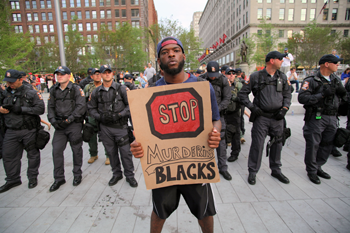
For example, if someone in your own race or ethnic group does not have a job, you might see this as a sign that the economy is slow and that jobs are hard to find. But if someone from another social group has no job, you might view that person as stupid or lazy.
Some people will admit they have biases based on stereotypes. Other people may not. Some people may not even know they have a biased view. In those cases, psychologists describe them as having a hidden or implicit bias.
Racism has existed for thousands of years around the world. It’s been at work for hundreds of years in the United States. “I’ve never lived a day in this country without bumping into racism,” Roberts says. Many people had learned how to mask their prejudice, he says. And American laws now forbid certain bigoted behaviors, such as refusing to serve blacks in a restaurant or barring them from certain schools. But the recent political campaign seems to have “emboldened” people to commit acts that unleash a masked racism, Roberts says.
Before Donald Trump’s win, Donovan says, some people “may have been more undercover in how they behaved.” But the president-elect won after a campaign in which he uttered many questionable statements about various ethnic groups.
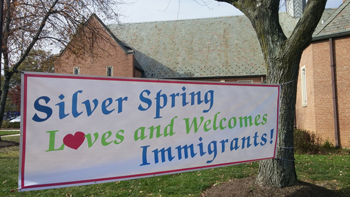
For instance, a July 6, 2015 story in Business Insider quoted the then presidential candidate as saying: “The Mexican Government is forcing their most unwanted people into the United States. They are, in many cases, criminals, drug dealers, rapists, etc.” Similarly bad elements, he said, are entering the United States “from all over South and Latin America, and … probably from the Middle East. But we don’t know. Because we have no protection … And it’s got to stop and it’s got to stop fast.” Trump even proposed limiting immigration of Muslims and deporting millions of foreign immigrants already in the United States.
Such comments from people in the public eye and positions of authority up the likelihood that Americans with racist attitudes “will bring their behavior out of the shadows,” Donovan says. Sadly, she adds, racist acts cause serious harm.
The pain that racism causes
Racism directly touched Pieterse when he was a black child in South Africa. At the time, South Africa’s laws called for separation of white and black people. The experience led him, as a scientist, to study how racism affects people.
In one project, Pieterse and his colleagues reviewed 66 studies involving more than 18,000 black American adults. The team found that effects from experiencing racism were like those that trauma patients suffered. Among other things, people may develop a lot of anxiety. They think about the hurtful incidents often. They worry it will happen again. They feel they have little power to stop racist remarks or actions. That distress can interfere with relationships and other areas of their lives. The Journal of Counseling Psychology published this study’s findings in 2012.
Racism can hurt people in other ways, too. People may begin to “question their own worth,” Pieterse notes. They might become depressed. They can feel sad or worry about the future. “These are very strong mental health outcomes that really impact people’s lives,” he says.
Racism can even have physical impacts. For instance, black Americans have higher rates of heart disease than do white Americans. Stress triggered by racism may be one factor that increases those risks, Pieterse suggests.
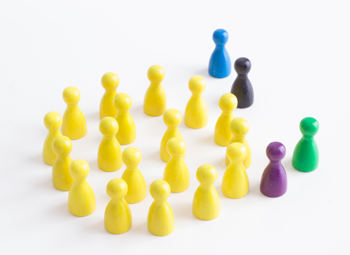
And, he adds, “Something doesn’t have to happen to you as an individual for you to be affected.” Nida and her parents, for example, felt hurt when Noah was harassed. Racism can make other members of ethnic groups feel anxious and worried, too.
Laws and public attitudes that support racism also can affect people’s self-worth. Stress from racism can even be passed down through generations — from grandparents to parents and then kids. One of Pieterse’s studies describes those broader impacts. His report is in a book published by the American Psychological Association in 2016.
Even stereotypes that sound positive can cause trouble. For instance, one common stereotype holds that black women are naturally strong. It says they will handle problems well. But do they really?
To find out, Donovan and a colleague conducted a study that asked black women whether they felt this was true. Those who did feel that way were more likely to suffer symptoms of depression from stress than did women who did not hold that view. The Journal of Black Psychology published these findings last year.
A follow-up study suggested several possible reasons. Women might be less likely to seek help if they think they are supposed to be strong, for instance. They may feel more pressure to be perfect. They might feel like failures if they do not appear strong. (Of course, other things might be stressing those women as well.) Donovan’s team reported its findings in the March issue of Women & Therapy.
Racism even hurts people outside its target group. Those who take part in racist acts develop a distorted view of their own worth, Pieterse notes. That can set them up for failure and disappointment in school, on the job or in relationships. And, he points out, people who do not believe racism is right can feel guilty, embarrassed or ashamed when others act that way.
Moving ahead
No matter how racism affects you — as a direct target, as a witness or as a member of the broader community — don’t ignore it, says Donovan. A 2010 research project by her group looked at ways black women coped with their experiences of racism. Those who did best had adopted “problem-focused” approaches. They acted in ways that related to what they had experienced. Women who tried to ignore or avoid the problem fared worst. Some turned to unhealthy behaviors, such as drinking alcohol or overeating, for example.
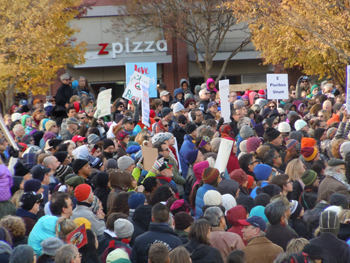
It’s healthiest to just “address the problem,” Donovan concludes. For example, you might attend a peaceful rally at your school or in your town. Or, you might join a group of concerned citizens. Taking part in such group action “has been shown to be a really powerful reducer of stress,” she notes.
But even acting as an individual can help. “Define your sphere of influence,” Donovan says. No, one person can’t change everything about racism. But think about what you can do. Perhaps you can write a column for the school or local newspaper. Maybe you can call or email your elected state representatives. Perhaps you can help with a fundraiser for groups that have been targets of prejudice.
Take time, too, to reflect on what biases you might hold, Donovan suggests. Reflecting on that can help break the link between stereotypes and racist behavior, she says. Also get to know members of ethnic groups other than your own, she adds. Experiences like that can help you see people as individuals, not as stereotypes.
In any case, says Pieterse, the time for teens to think and do something about racism is now. Racism is real. But if people can understand how those in other groups see things, they can start to deal with inequities in society. Even before then, people can determine what types of speech and behaviors are never acceptable.
“In a sense, young people are in a better position of being able to identify racism and say something about it,” Pieterse finds. Indeed, he notes, for some adults who have developed prejudiced behaviors, “We have to kind of unlearn bad things.”






